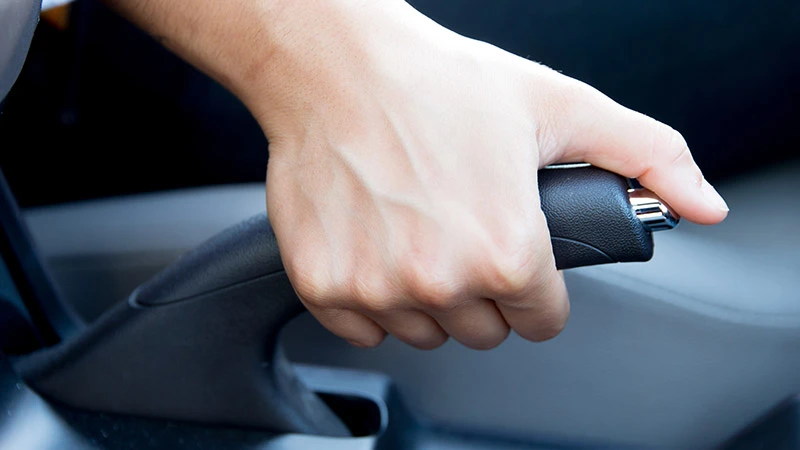It is vital that the brakes of your vehicle are working properly to ensure the safety of the driver as well as other road users. .
Brake failure can be a terrifying thought for drivers, as it conjures up images of speeding out of control and possible collisions
This article will examine the causes and immediate steps to be taken when facing this situation. We’ll also discuss strategies that can help prevent brake failures by performing regular maintenance.
Brakes failure causes
Understanding the causes of brake failure is important for prevention as well as response. Some of the most common causes are brake fluid leaks or worn brake rotors and pads, air trapped in brake lines, hydraulic system failures, as well as brake fluid.
Brake failure signs
Be aware of any warning signs before you take action when your brakes fail. This includes a soft, spongy, or noisy brake pedal. It could also be a burning scent, or an indicator light on the dashboard. Early recognition of these warning signs can lead to proactive actions that address brake issues before they become more serious.
Actions to be taken immediately in the event of brake failure
Maintaining composure when faced with brake failure and swift, decisive action can save lives. Following are some steps to take when brakes fail.
Stay calm and avoid panic
Even though it is difficult, you must remain calm in the event of a brake failure. Fear can lead to poor decision-making and further problems. Focus on your immediate actions and stay as calm as you can.
Downshift gears
Downshifting is a great way to slow your car down if you have a manual gearbox. Slowly downshift so that the engine can help reduce speed. It is especially effective in vehicles that have manual transmissions because it provides additional brake force.
How to engage the emergency brake
It can also be used as a secondary brake system. Avoid sudden movements that may result in a loss of control by applying the emergency brake slowly and steadily. Remember that an emergency brake is not as powerful as the main braking system. It should therefore be used with other methods.
Pumping the brakes pedal
Pump the brake pedal quickly if you have anti-lock braking (ABS). Pumping the brake pedal will help to maintain braking power. ABS systems prevent wheels from locking up during braking. If your vehicle does not have ABS, you can build up the braking power by applying steady pressure to the pedal.
Utilize Engine Braking
Consider using the engine brake if you can. You can use the engine to slow the car down by shifting into lower gear. When traditional brakes are not working, engine braking may be the best option.

Steering to Safety
As you decelerate your car, take a moment to assess the surroundings. Then steer your vehicle in a direction that is safe. Search for places with little traffic, such as the side of the road or an area away from vehicles. Use hazard signals and lights to communicate your condition with other motorists.
Calling for emergency assistance
Call emergency services if you cannot stop the vehicle safely. Give your location and the type of emergency you are experiencing, as well as any pertinent details regarding your vehicle. Responders to emergencies can provide assistance and even give guidance in a crisis situation.
Regular maintenance and preventive measures
Regular inspections and proactive maintenance are the first steps to preventing brake failure. Preventive measures are important to reduce the chance of brake failure.
Brake inspections
As part of routine vehicle maintenance, schedule regular brake inspections. Check the brake fluid, brake pads, brake rotors and calipers. Any signs of abnormal wear should be addressed immediately.
Brake Fluid Checks
Keep the brake fluid at the level recommended and in good condition. The brake fluid is crucial in the transmission of hydraulic pressure to and from your braking system. Check for brake fluid leaks regularly and make sure that they are in the range specified.
Replacement Brake Pads and Rotor
Friction wears out brake pads and rotors over time. According to manufacturer recommendations, or if signs of wear become apparent, replace brake pads and/or rotors. If you ignore worn-out brake components, it can result in decreased braking performance.
Bleeding Brake System
The brake performance can be compromised by air in the lines. By removing air from the system, you can ensure that the hydraulic pressure is properly transmitted. As part of routine maintenance, consider having your brake system bled.
Professional Inspect
Ask for professional help to perform a thorough brake system check. A professional mechanic can detect potential problems that are not always apparent in routine inspections. This preventative approach will help you avoid unexpected brake failures.
Brake failure can be a frightening experience, but knowing what to do and being prepared will make all the difference. Brake safety is dependent on recognizing warning signs and taking action immediately during an emergency. Drivers can overcome brake failure by staying calm and using alternative methods of braking. They should also prioritize safety.
